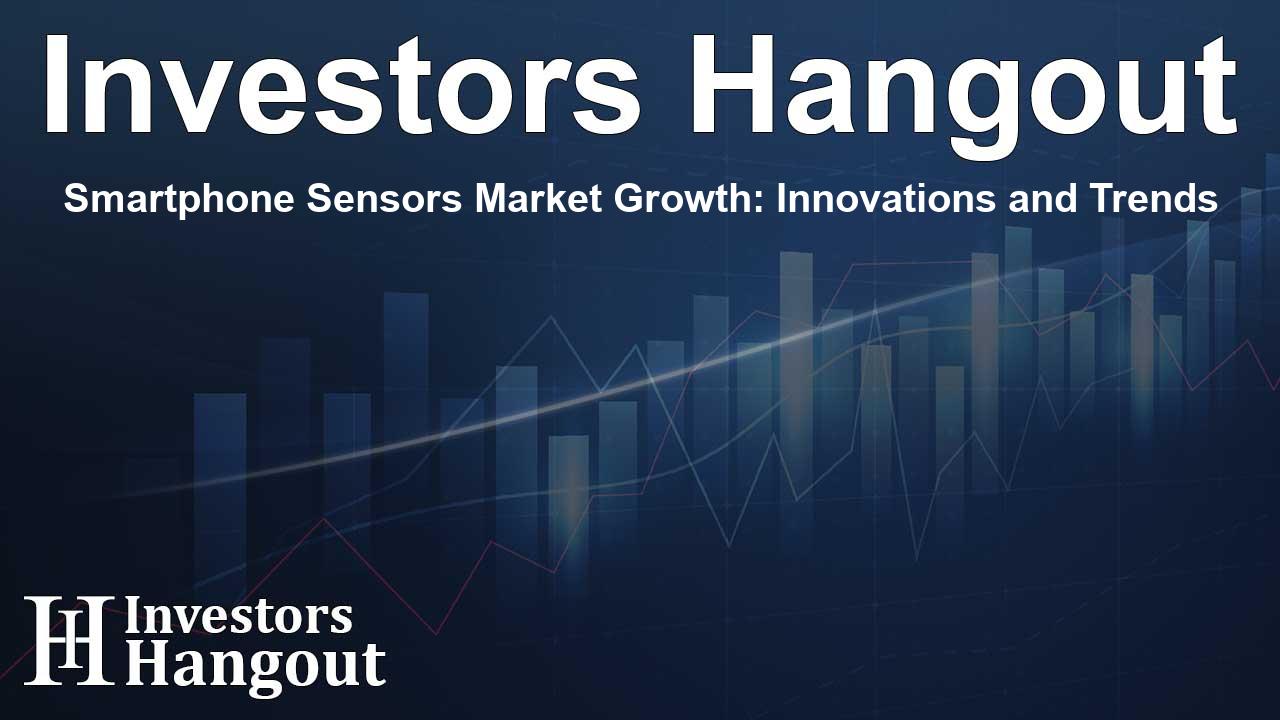Smartphone Sensors Market Growth: Innovations and Trends

Market Size and Growth Outlook
The Smartphone Sensors Market was valued at USD 83.59 billion in 2023 and is expected to reach USD 367.94 billion by 2032, growing at a CAGR of 17.9% over the forecast period from 2024 to 2032. Various factors contribute to this significant growth, primarily the increasing integration of advanced sensors in smartphones, driven by consumer demand for improved functionality.
The Role of AI in Agriculture
Advanced smartphone sensors are playing a crucial role in the agricultural sector, particularly with the rapid adoption of AI technology. The demand for these sensors has surged as they are essential for monitoring crop health, optimizing irrigation, detecting pests, and predicting yields. The food crisis generated by climate change further amplifies the need for innovative agricultural solutions, solidifying the importance of smartphone sensors in modern farming.
Impact on Global Agriculture
The integration of AI in farming practices, supported by enhanced smartphone sensors, offers transformative potential for agriculture worldwide. As farmers lean into technology to boost productivity, smartphone sensors emerge as vital tools, driving the agricultural sector toward sustainability amidst the challenges posed by climate change.
The Influence of Cybersecurity on Market Growth
The rise of IoT devices across various industries, particularly in mobile technology and automotive sectors, has led to a robust expansion of the smartphone sensor market. As consumer safety and data protection become paramount, regulations such as the U.S. Cyber Trust Mark Labeling Program and the EU's Cyber Resilience Act have catalyzed the demand for advanced smartphone sensors, including biometric, environmental, and motion sensors.
Regulatory Challenges and Innovations
While compliance with these new cybersecurity regulations presents challenges, they also pave the way for innovation. Smartphone manufacturers can seize the opportunity to differentiate their products by integrating enhanced security features. This dynamic not only bolsters the growth of the smartphone sensor market but also fosters continual innovation within the IoT landscape.
Key Players in the Smartphone Sensors Market
Several key market players are driving innovation and growth within the smartphone sensors market. These include leading multinational corporations such as Epson Europe Electronics, DYNA IMAGE Corporation, NEXT Biometrics, Samsung Electronics, and Sony Corporation. Their continuous research and development efforts are essential to meeting the rising demand for sophisticated sensor technologies.
Technological Advancements
Innovations in smartphone sensors focus on enhancing user experience through improvements like image quality and sensor performance. In 2023, image sensors commanded a remarkable 29% share of the smartphone sensor market, largely driven by consumer preferences for advanced photo and video features fueled by social media engagement.
Leading Companies and Their Contributions
Companies like Sony and Samsung are at the forefront of these technological advancements. The adoption of CMOS sensors is prevalent due to their balance of performance and cost-effectiveness, enabling significant improvements in photography and videography for smartphone users.
Market Dynamics: North America vs. Asia-Pacific
In 2023, North America held the largest market share at 34%, thanks to its robust demand for high-end smartphones and continuous technological advancements. Companies like Apple and Qualcomm are instrumental in propelling market growth in this region. Meanwhile, the Asia-Pacific region is rapidly expanding, securing a 29% share due to its strong manufacturing capabilities and rising disposable incomes, particularly in China, South Korea, and India.
Future Outlook
The smartphone sensors market is poised for further growth, driven by innovations in technology and the increasing integration of advanced sensors in smartphones. Continuous improvements will emerge in response to heightened consumer expectations and regulatory advancements.
Recent Developments
The industry has witnessed notable advancements in sensor technology, including:
- The recent launch of high-performance imaging sensors by companies like Sony and Samsung, enhancing the photography capabilities of premium smartphones.
- Qualcomm's unveiling of advanced chipsets incorporating sophisticated camera sensors to push the boundaries of mobile imaging.
Frequently Asked Questions
What is the projected growth rate of the smartphone sensors market?
The smartphone sensors market is expected to grow at a CAGR of 17.9%, reaching USD 367.94 billion by 2032.
How are smartphone sensors impacting agriculture?
Smartphone sensors facilitate critical agricultural functions such as crop health monitoring and yield prediction, significantly boosting farming efficiency.
Which regions dominate the smartphone sensors market?
North America currently leads the market, followed by significant growth in the Asia-Pacific region.
Who are the key players in the smartphone sensors market?
Notable companies include Epson, Samsung, Sony, and Panasonic, among others, playing vital roles in innovation.
What challenges does the smartphone sensors market face?
Compliance with emerging cybersecurity regulations presents challenges but also fosters opportunities for product differentiation and innovation.
About Investors Hangout
Investors Hangout is a leading online stock forum for financial discussion and learning, offering a wide range of free tools and resources. It draws in traders of all levels, who exchange market knowledge, investigate trading tactics, and keep an eye on industry developments in real time. Featuring financial articles, stock message boards, quotes, charts, company profiles, and live news updates. Through cooperative learning and a wealth of informational resources, it helps users from novices creating their first portfolios to experts honing their techniques. Join Investors Hangout today: https://investorshangout.com/
Disclaimer: The content of this article is solely for general informational purposes only; it does not represent legal, financial, or investment advice. Investors Hangout does not offer financial advice; the author is not a licensed financial advisor. Consult a qualified advisor before making any financial or investment decisions based on this article. The author's interpretation of publicly available data shapes the opinions presented here; as a result, they should not be taken as advice to purchase, sell, or hold any securities mentioned or any other investments. The author does not guarantee the accuracy, completeness, or timeliness of any material, providing it "as is." Information and market conditions may change; past performance is not indicative of future outcomes. If any of the material offered here is inaccurate, please contact us for corrections.